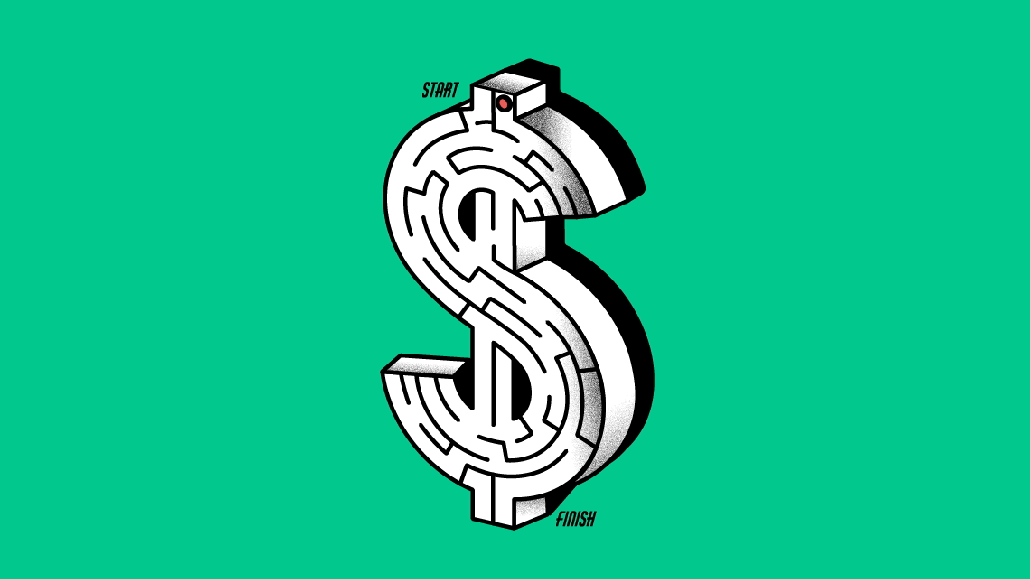Save 50% on a 3-month Digiday+ membership. Ends Dec 5.
Why — and how — the IAB is developing new measurement standards for in-game ads

To address recent growth in the in-game advertising sector, the Interactive Advertising Bureau is developing new in-game advertising measurement standards to replace its current guidelines. The project is a joint effort between the IAB, the IAB Tech Lab and the Media Rating Council, with considerable input from members of IAB UK and a task force of prominent in-game ad companies, brands and agencies.
Video games and advertising technology were in a vastly different stage of development in 2009, when the IAB released its current set of in-game ad measurement standards. “The 2009 one is completely outdated,” said Lewis Sherlock, svp of programmatic at in-game ad firm Bidstack, one of the 36 companies participating in the IAB’s in-game advertising task force. “It’s basically a complete bolt-on of the regular display standards that doesn’t really take into consideration the 3D environments where the ads are placed.”
The IAB had been keeping an eye on the explosion of gaming activity sparked by the COVID-19 pandemic, but the current in-game initiative was inspired by the MRC’s decision to release a September 2021 interim guidance memo discussing shortcomings in the IAB’s 2009 standards. “It says you can’t use the current viewability measurements for these particular ads,” said Cary Tilds, chief strategy and operations officer of participating in-game ad company Frameplay and co-chair of the IAB’s games and esports committee. “Some of them you can — the ads that are basically around or next to the game, that use current browser-based ad-serving techniques, sure — but when it comes to ads that are intrinsically inside of the game, it basically says the current viewability standards don’t apply.”
“Honestly, the impetus for this was just sheer necessity — it was just so outdated,” said Zoë Soon, vp of the IAB’s Experience Center. “The viewability standard required a 10-second cumulative viewability for it to count as a delivered ad, which is way more than is necessary if you look for the actual viewability standards that we have for other media.”
In addition to its shortcomings with issues of viewability in three-dimensional environments, the 2009 standards were released during the early days of programmatic advertising, largely failing to take into account the impact of programmatic on the in-game space. These days, ads are often delivered programmatically into video games. “There’s been a lot of movement, technology-wise,” Sherlock said.
The project kicked off in earnest on February 24, when the IAB hosted the first meeting of its task force, which includes representatives of companies such as Google, Dentsu, Microsoft Advertising, Xaxis, and ABC Networks, in addition to the aforementioned participants. The IAB plans to wrap up the initial draft of its updated standards in March 2022, with a second draft to follow in April. The first public-facing draft will be released for comment at the end of May, and the IAB anticipates it will publish the final version at some point in June. “We normally run working groups where you have to be a member to join — but this is actually a task force because we want industry buy-in,” Soon said. “We wanted full representation from the whole ecosystem: the buy-and-sell side, brands and agencies, verification partners like Moat.”
Once the revised standards are finalized in June, all companies certified by the old standard will have to go through an updated MRC certification process. “None of the current viewability partners are actually certified to measure the viewability of ads in these virtual environments — they’re just not,” Tilds said. “So I wouldn’t say there are bad actors, but I would say that there needs to be this measurement so that the entire industry can add one more layer of trust.”
Indeed, the development of new standards is more than a mere navel-gazing exercise for the in-game advertising firms involved. They believe the standardization of in-game ad measurement is crucial to keep advertisers comfortable operating in this relatively new space. As in-game ads transition from a novelty to a core element of companies’ marketing strategy, brands are increasingly scrutinizing the results of in-game ad campaigns, particularly to measure their impact on brand recall and recognition. “Innovation is at the forefront of PepsiCo’s culture, and measurement is an extremely important pillar to that,” said Kate Brady, PepsiCo’s global head of media innovation and partnerships. “When we evaluate new channels such as gaming, we’re working with cutting-edge partners like Frameplay who can help us maximize return on innovation through accurate measurement such as viewability, IVT and invaluable attention metrics.”
For now, the participants in the IAB’s in-game advertising task force are meeting weekly to hammer out the first draft of updated standards by the end of March. Their efforts are likely to result in an in-game advertising industry more appealing and accessible to the brands and marketers sitting on the fence.
“It’s a long-overdue moment,” Soon said.
More in Marketing

Ulta, Best Buy and Adidas dominate AI holiday shopping mentions
The brands that are seeing the biggest boost from this shift in consumer behavior are some of the biggest retailers.

U.K. retailer Boots leads brand efforts to invest in ad creative’s data layer
For media dollars to make an impact, brands need ad creative that actually hits. More CMOs are investing in pre- and post-flight measurement.

‘AI is permeating everything we do’: How Guitar Center developed 2 AI tools this year
This summer, the company launched a chatbot called Rig Advisor to help customers find the right instruments and products.
Ad position: web_bfu



